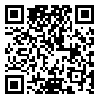BibTeX | RIS | EndNote | Medlars | ProCite | Reference Manager | RefWorks
Send citation to:
URL: http://shenakht.muk.ac.ir/article-1-340-en.html
2- Professor, Department of Psychology, University of Isfahan, Isfahan, Iran
3- Associate Professor, Department of Psychology, Islamic Azad University,Isfahan (Khorasgan) Branch, Isfahan, Iran
Introduction: According to the World Health Organization eating disorder is one of the most challenging diseases of adolescents with a developing prevalence.
Aim: The present study was aimed at comparing the effect of schema therapy and CBT on modifying early maladaptive schemas in patients with bulimia nervosa considering parental bonding.
Method: The study had an experimental method was used in this study with pretest-posttest design and followed-up with control group. The study population included all patients from 16 to 23 years of age with eating disorders who had referred to psychiatry centers of in Tehran. Purposive sampling was used in this study in which, by performing psychological screening, 39 patients were diagnosed to have Bulimia nervosa. Finally, the selected patients were matched in two experimental groups and one control group. The data was collected through two questionnaires (Parental Bonding Questionnaire and Young Schema) and diagnostic interviews based on diagnostic criteria for eating disorders and psychiatric diagnosis.
Results: The main problems of the patients included having cuts, being rejected, autonomy, and impaired performance. However, they were less vulnerable in other areas including orientation and violating restrictions.
Conclusion: The findings of this study can be helpful in the etiology of bulimia nervosa disorder based on the systematic approach and pave the way for further research in this area.
Received: 2018/11/14 | Accepted: 2019/02/20 | Published: 2019/06/15
| Rights and permissions | |
 |
This work is licensed under a Creative Commons Attribution-NonCommercial 4.0 International License. |








